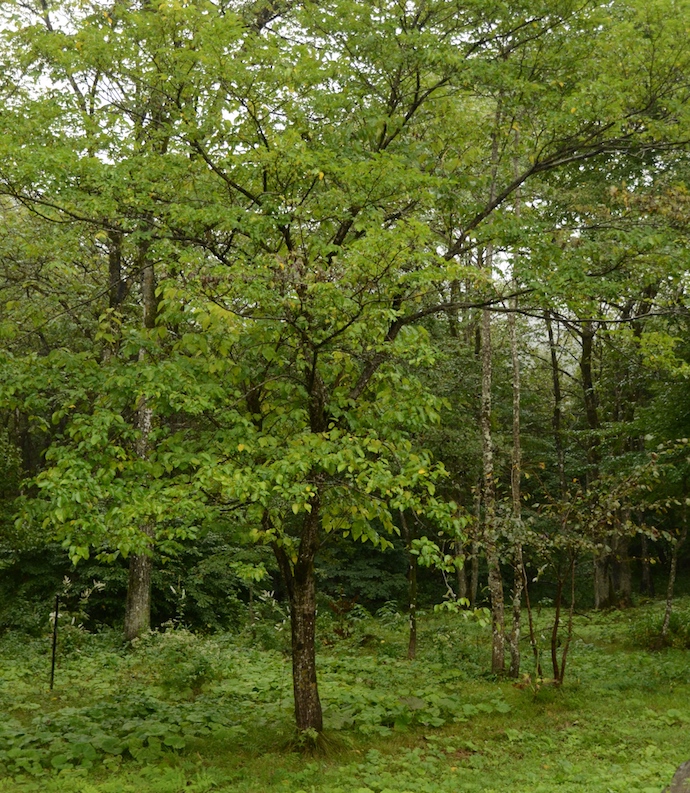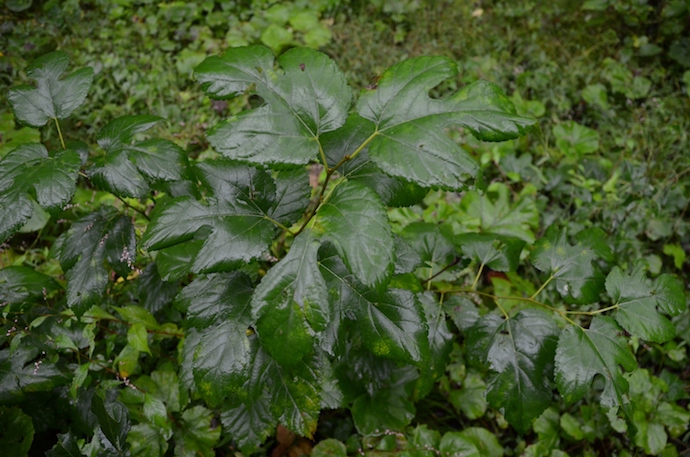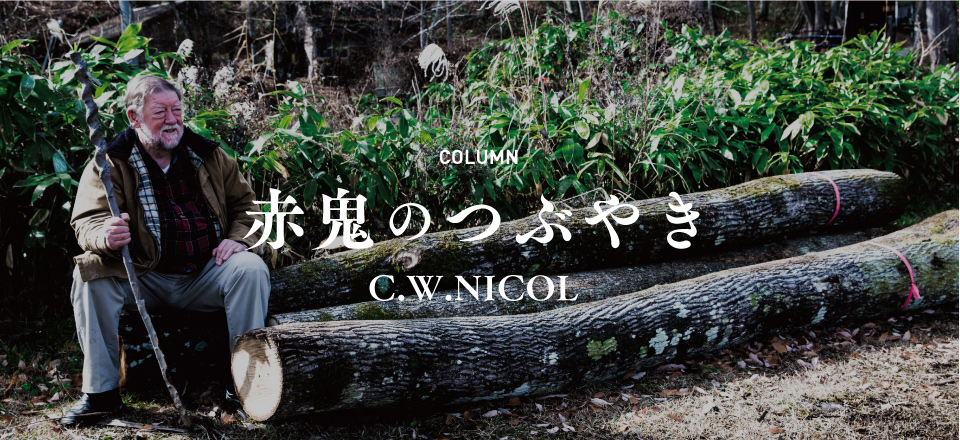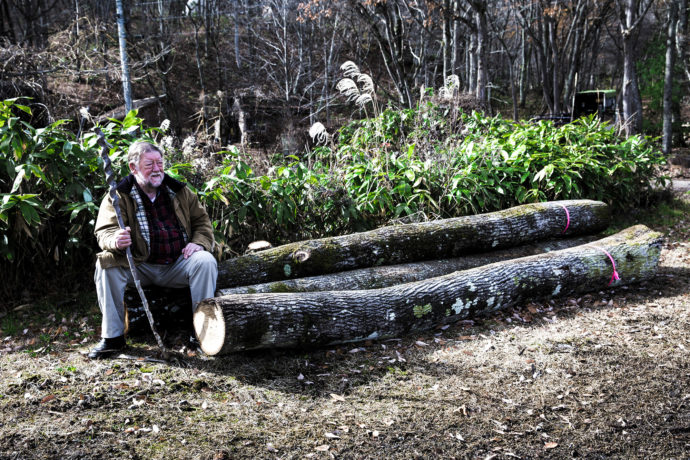Column
【赤鬼のつぶやき C.W.ニコル】クワ(Mulberry)

クワは、落葉樹の一種です。日本国内では、野生のヤマグワと農業用に栽培されている品種、大きく2つの種類があります。このクワの葉をエサにして飼育されるといえば「蚕」のこと。ラテン語の学名では「Bombyx mori(ボンビークス・モリー)」と呼ばれ、このカイコガのさなぎが作った繭から生みだされるのが絹で、中国大陸から伝わった五千年以上の歴史がある素材です。
北信州のアファンの森では野生のヤマグワがたくさん生えていてとってもおいしい甘い実をつけ、十分に熟すと赤から黒に色が変化します。遊びに来る子どもたち、そしてクマたちもこの黒い実が大好きですが、洋服についたおいしい果汁は濃い紫のシミになってしまうので、くれぐれもご注意を。
木材も硬くて耐久性の高い、目の詰まった美しい木目を誇ります。ブライダル衣装向けのトルソー、茶箪笥、鏡台などに使われていることは案外知られていないような気がします。さらに反りがすくなく扱いやすいのも魅力だとか。使っているうちにツヤが出てくる経年変化を楽しむこともできて、美しく年を重ねた女性のようだと絶賛されています。

なかには樹齢五百年以上になるものもあり、クワは若木の成長の速さに対して老木になるとゆっくりと太くなるために材の品質が良いのです。ヨーロッパでは貴重で高価な材として化粧貼りに使われたり、北米の家具ビジネスでも存在感を増しています。

葉は漢方薬としても重用され、糖尿病や肥満に効果があるといわれています。(わたしも試してみたほうがよいかな…。)熟した実をあつめる余裕があるときには、黒糖と泡盛や焼酎で果実酒を仕込みます。炭酸水で割っても最高、カクテルにもぴったりです。
いつも口を酸っぱくして言っていますが、クワをはじめとする果実やどんぐりなどの木の実をつける広葉樹の多くが、「雑木」として軽んじられているのがわたしには信じられません。本当は彼らまったくの無実で、むしろ大活躍している素敵な仲間たちなのだと。森のクマさんだって賛成してくれるのではないでしょうか!
C.W.ニコル
2016年9月
写真提供:C.W.ニコル・アファンの森財団
MULBERRY
The mulberry is a deciduous tree, which in Japan grows both wild and under cultivation. Mulberry leaves were widely known for their being the food of the ‘silkworm’, which is actually the caterpillar of a domesticated moth with the scientific name of ‘Bombyx mori.’ Silk, which was first produced in China about 5000 years ago, is produced from the pupa case of the moth.
In our ‘Afan’ woods here in northern Nagano, we have lots of wild mulberry trees, which we know more for their delicious, sweet fruit. Our mulberry fruits are black when ripe, red when unripe. Bears and children love the black ones, but be careful not to get the juice on your clothes! It can stain a white shirt a beautiful purple-black.
Another use for mulberry, not quite so well known, is for its wood, which is of fine, hard texture, very durable, with beautiful grain patterns. It Japan it was widely used for bridal trousseau furniture; tea chests, mirror frames and so on. Mulberry wood is said to be easily worked and to resist warping. It also used to be known for the dark lustre it gained as it aged, and people used to say that the wood ‘aged beautifully with the woman.’
For furniture, only wild trees are used, and wild mulberry trees can grow to be 500 years or more. They grow very quickly when young, and then very slowly, which makes for the fine grain.
In Europe mulberry was favoured as a rare and expensive veneer. Nowadays mulberry wood is finding more popularity in North America in upscale furniture markets.
Mulberry leaves are also well known in Chinese herbal medicine, used to treat diabetes and for weight loss. Maybe I should try it sometime? When I have time I gather ripe mulberry fruit, add a little black sugar, and cover them in a jar filled with shochu or Okinawan awamori, leaving them for at least a few months. This drink is great with sparkling soda water or mixed in cocktails.
Like so many other trees, especially fruit, nut or acorn producing hardwoods, the mulberry has been dismissed by the main Japanese forest industry as a useless ‘zatsu boku’ but nothing could be farther from the truth. The mulberry is a very valuable tree. If you don’t believe me, ask the bears!
C.W.Nicol
September . 2016.
C.W.ニコル
作家・1940年イギリス南ウェールズ生まれ。1995年日本国籍取得。カナダ水産調査局北極生物研究所の技官・環境局の環境問題緊急対策官やエチオピアのシミエン山岳国立公園の公園長など世界各地で環境保護活動を行い、1980年から長野県在住。1984年から荒れ果てた里山を購入し「アファンの森」と名づけ、森の再生活動を始める。2005年、その活動が認められエリザベス女王から名誉大英勲章を賜る。2011年、2016年に天皇、皇后両陛下がアファンの森をご視察された。





